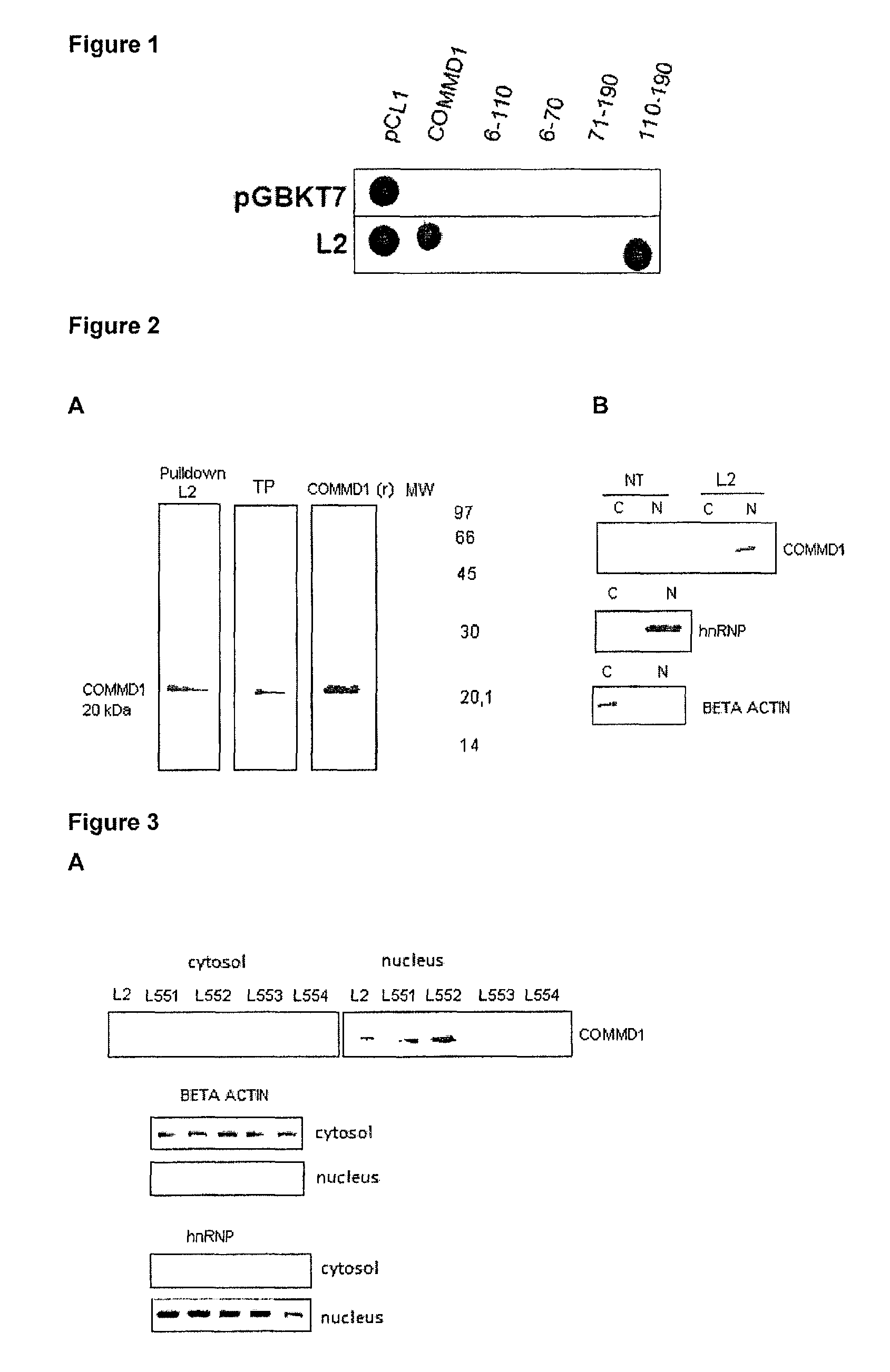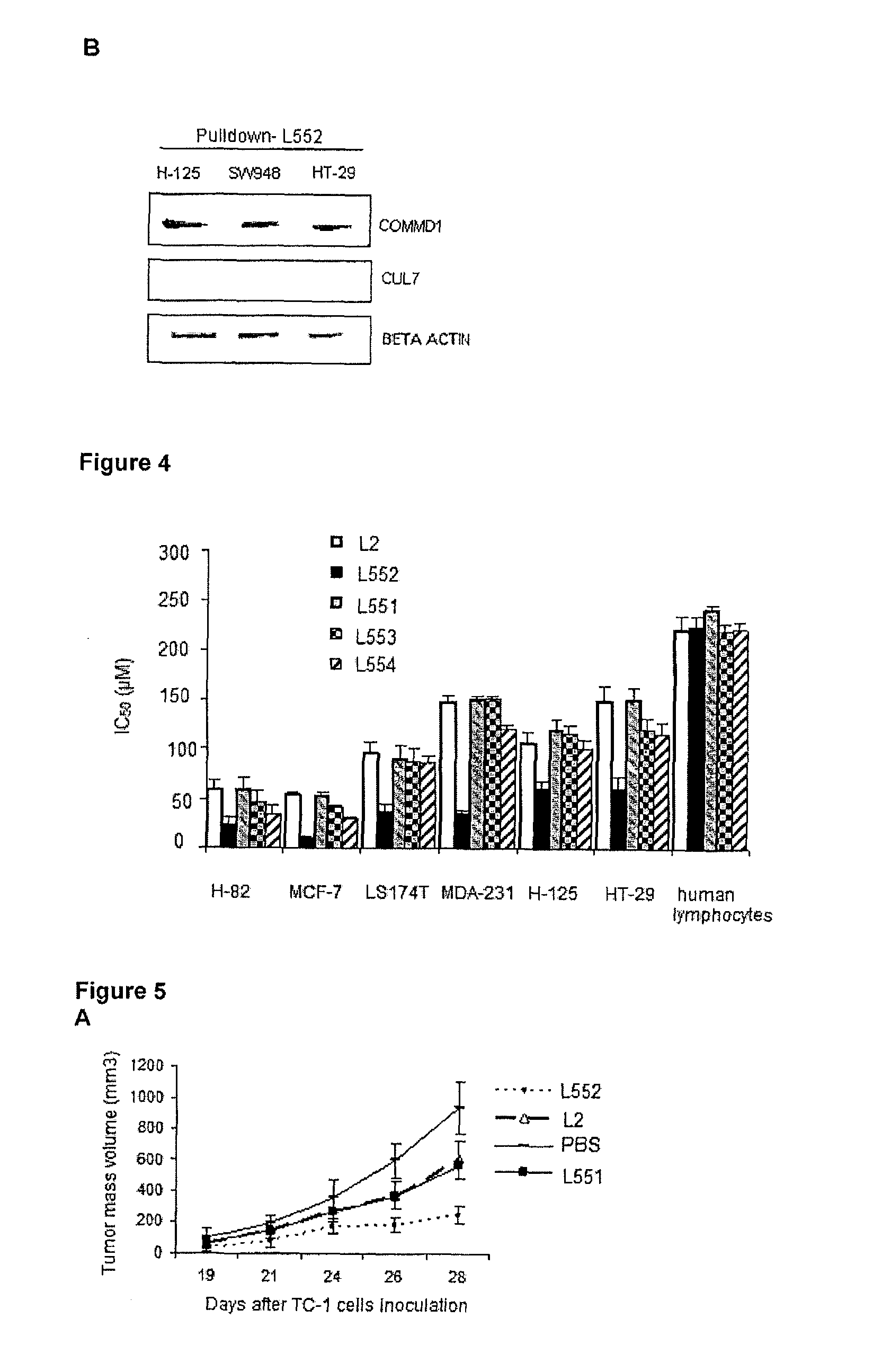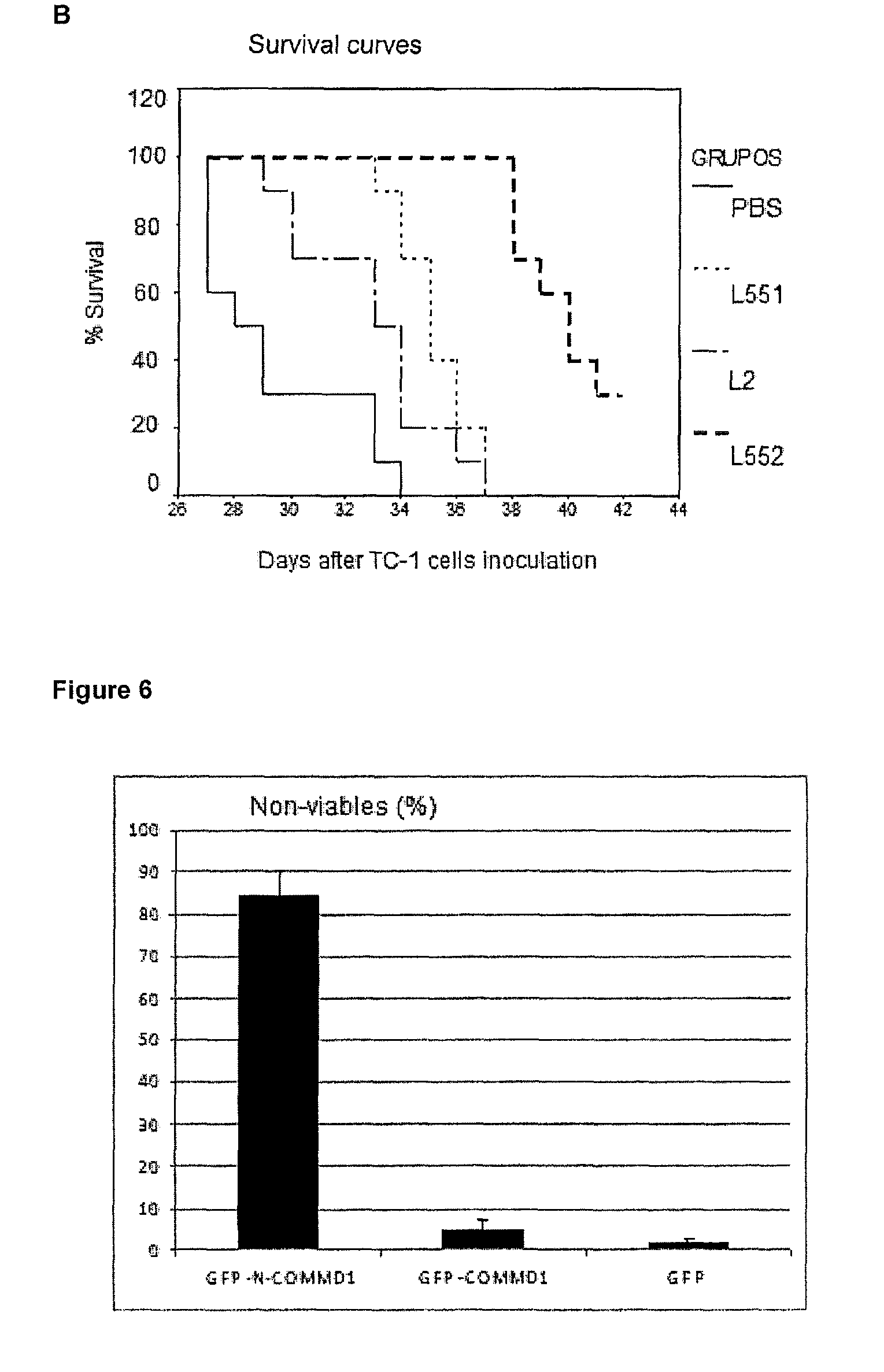Cancer therapy method
a cancer therapy and cancer technology, applied in the field of biomedicine, can solve the problems of low selectivity, drug resistance, toxicity and development of drug resistance, and most of these therapies have limited effectiveness in the complexity of solid tumors, so as to increase the antitumor efficacy in vivo, inhibit tumor progression, and improve the effect of survival
- Summary
- Abstract
- Description
- Claims
- Application Information
AI Technical Summary
Benefits of technology
Problems solved by technology
Method used
Image
Examples
example 1
Physical Interaction Between the L2 Peptide and COMMD1
[0039]To identify anti-tumor L2 peptide-protein interactions the two-hybrid yeast system was used. For cloning the sequences corresponding to the peptide the oligonucleotides were designed as follows:
[0040]
L2F:CATGCACGCTAGAATCAAGCCAACCTTCAGAAGATTGAAGTGGAAGTACAAGGGTAAGTTCTGGTAAL2R:GATCTTACCAGAACTTACCCTTGTACTTCCACTTCAATCTTCTGAAGGTTGGCTTGATTCTAGCGTG
corresponding to the L2 peptide sequence: HARIKPTFRRLKWKYKGKFW
For cloning these sequences in the pGBKT7 NcoI-BamHI vector, sequences complementary to these sites were added at the ends of the oligonucleotides. The pGBKL2-1 recombinant plasmid, which carries the L2 peptide sequence was verified by restriction analysis and sequencing. The plasmid was transformed into the AH109 yeast strain by the lithium acetate method and grown in SD-Trp medium. It was verified that it could not be self-activated when grown on SD-Trp-His plates. For the screening of the interactions, a human liver cDNA lib...
example 2
Immunoprecipitation Experiments (Pulldown) and Determination of the Nuclear Localization of COMMD1 in Cancer Cells Treated with the Peptide L552
[0041]The experiments were divided into two blocks:
[0042](A) The synthetic L2 peptide (SEQ ID No. 1), synthesized using a solid phase procedure was biotinylated and used as “bait” attached to a streptavidin sepharose resin. Total extract protein from SW948 (cell line from human colon carcinoma) was used as a “prey”. These experiments are known as “pulldown”. The total extract protein was obtained from 2×10′ cells using extraction buffer (Triton X-100 0.5% 25 mM HEPES, pH 7.5, 100 mM NaCl, 1 mM EDTA, 10% glycerol, 1 mM dithiothreitol (DTT), and a protease inhibitor). The biotinylated peptide (300 μg) was incubated with 50 μL of streptavidin sepharose resin (GE Healthcare), for 1 hour, and washed with phosphate buffered saline (PBS 1×) plus 1 mM DTT were done. Then, 500 μL of total proteins were incubated with 50 μL resin containing the biotin...
example 3
Optimization of L552 Peptide for Nuclear Accumulation of COMMD1
[0044]Considering that the peptide L2 and COMMD1 have a physical interaction, and this correlated with the nuclear localization of COMMD1, several peptides were designed starting from L2 (SEQ ID No. 1), with the aim of enhancing the nuclear accumulation of COMMD1. The peptides of this invention were synthesized using a solid phase procedure. The crude peptide is extracted with a solution of 30% acetic acid; it is lyophilized and then purified by reverse phase chromatography RP-HPLC. The molecular mass of purified peptides was verified by mass spectrometry. The resulting preparation is non-antigenic, non-pyrogenic and pharmaceutically acceptable for administration in animals and humans. Substitutions were made on certain points, introducing D-amino acids in specific positions in the original L2 peptide, whose sequence is HARIKPTFRRLKWKYKGKFW (SEQ ID No. 1), as shown in Table 1. In one case, the N-terminal was also blocked...
PUM
| Property | Measurement | Unit |
|---|---|---|
| pH | aaaaa | aaaaa |
| pH | aaaaa | aaaaa |
| pH | aaaaa | aaaaa |
Abstract
Description
Claims
Application Information
 Login to View More
Login to View More - R&D
- Intellectual Property
- Life Sciences
- Materials
- Tech Scout
- Unparalleled Data Quality
- Higher Quality Content
- 60% Fewer Hallucinations
Browse by: Latest US Patents, China's latest patents, Technical Efficacy Thesaurus, Application Domain, Technology Topic, Popular Technical Reports.
© 2025 PatSnap. All rights reserved.Legal|Privacy policy|Modern Slavery Act Transparency Statement|Sitemap|About US| Contact US: help@patsnap.com



